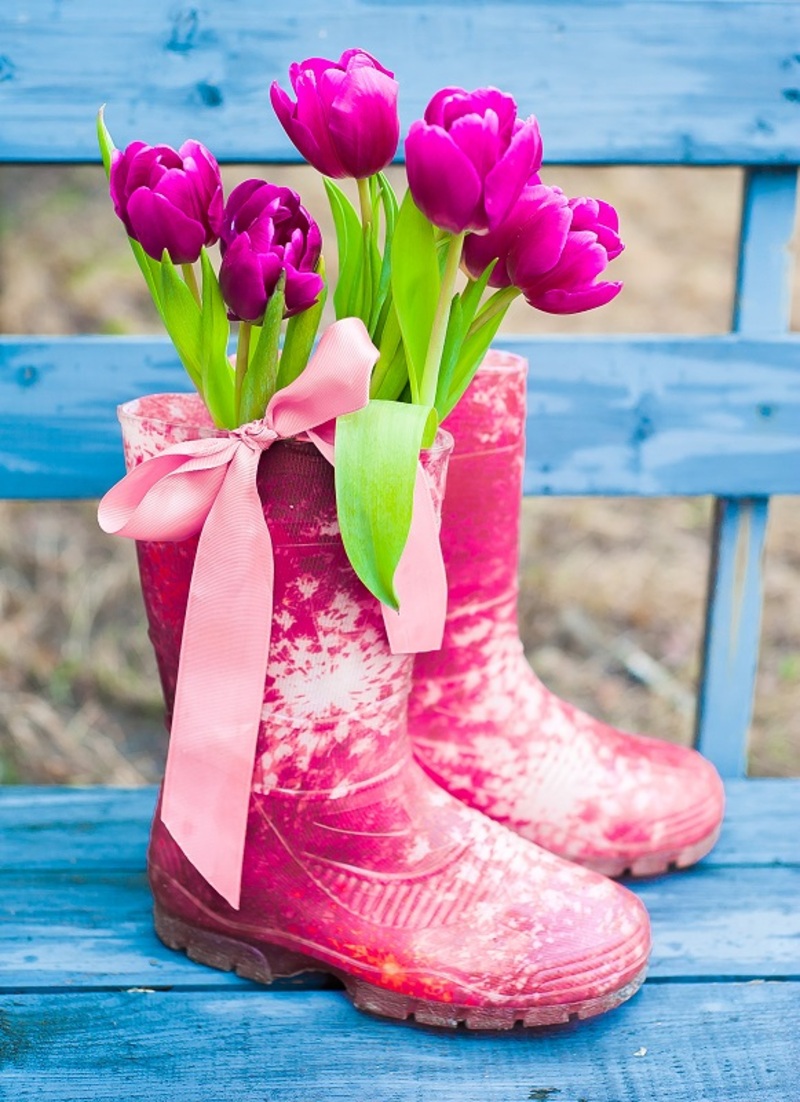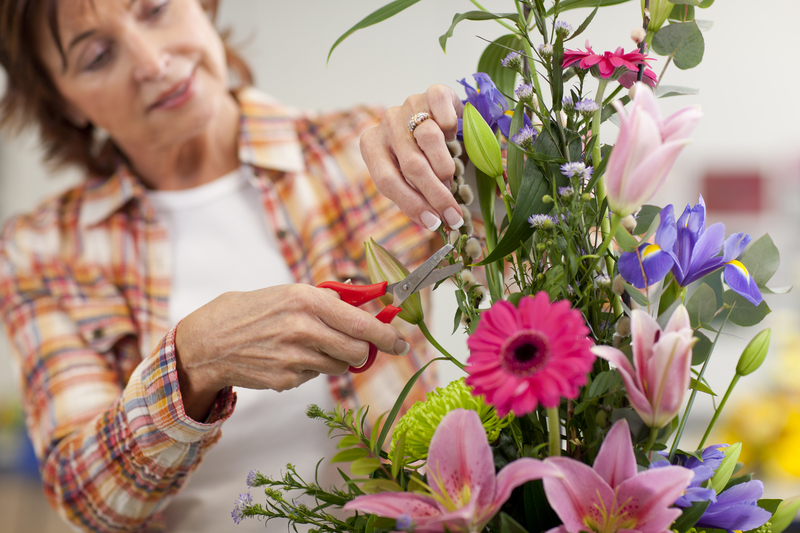Maintaining Poinsettias: A Guide to Longer Lasting Beauty
Posted on 01/07/2025
Maintaining Poinsettias: A Guide to Longer Lasting Beauty
Poinsettias are more than just festival favorites; they are iconic houseplants cherished for their bright, festive red, white, pink, or variegated bracts. Each holiday season, millions of homes are brought to life by these vibrant beauties, but many find their Poinsettias fading quickly after the season ends. With the right care, however, you can enjoy longer-lasting Poinsettia plants well beyond the holidays. In this thorough guide, we'll uncover how to maintain Poinsettias, ensuring healthy blooms and lush leaves for months or even years.
Understanding Poinsettias: More Than a Holiday Plant
Poinsettias (Euphorbia pulcherrima) are native to Mexico and Central America and have been popularized as symbols of Christmas thanks to their striking colors and star-shaped leaf patterns. Often, their showiest parts are not actually flowers but modified leaves called bracts. The actual flowers -- called cyathia -- are small, yellow or green, and usually cluster at the center of the bracts.
Maintaining the beauty and vitality of Poinsettias calls for some basic horticultural know-how. By understanding their natural habitat and growth habits, you can recreate optimal conditions in your home, making your Poinsettia an enduring centerpiece.

How to Care for Poinsettias: Step-By-Step Maintenance Guide
1. Choosing the Right Poinsettia
- Inspect foliage: Select a plant with lush, deep green leaves and neither wilting nor yellowing foliage.
- Check for healthy bracts: Bracts should be fully colored and robust, with minimal breakage or curling.
- Small, central flowers: Choose plants whose true flowers (cyathia) are not fully open, indicating freshness.
2. Ideal Placement: Lighting Requirements
- Poinsettias thrive in bright, indirect sunlight. Place near an east-facing window or slightly away from south/west facing ones.
- Avoid direct sunlight: Too much direct light may scorch the bracts and leaves, causing fading or yellowing.
- Rotate your plant every few days to ensure even growth.
3. Proper Temperature and Humidity
- Keep temperatures between 65?F and 75?F (18?C-24?C) during the day.
- Avoid temperature drops below 50?F (10?C) at night.
- Avoid placing your Poinsettia near drafts, heaters, or fireplaces.
- Increase humidity if possible (especially in winter) by using a pebble tray or humidifier.
Tip: Poinsettias dislike sudden changes in environment -- stability equals longevity!
4. Watering Your Poinsettia: The Golden Rule of Maintenance
- Water when the top inch of soil feels dry to the touch. Overwatering is the most common cause of holiday Poinsettia death.
- Ensure the pot has good drainage holes. Remove excess water from saucers to prevent root rot.
- Never allow your plant to sit in standing water!
- Use room-temperature water for each watering session.
5. Fertilization: Encouraging Growth and Color
- Do not fertilize while blooming. After the holidays, start monthly feeding using a balanced, water-soluble houseplant fertilizer.
- During active growth (spring-summer), you may fertilize every 2-4 weeks to boost lush foliage and robust stems.
6. Pruning and Pinching Back
- Prune your Poinsettia back in late winter or early spring, once the bracts fade.
- Regular pinching of new shoots (March-June) encourages bushier growth and prevents legginess.
- Wear gloves, as Poinsettia sap can be irritating.
7. Repotting Poinsettias
- Repot every 2-3 years or when roots begin to crowd the pot.
- Use fresh, well-draining potting mix -- a blend for indoor plants or a mix including peat moss and perlite works well.
- Choose a container with adequate drainage.
8. Poinsettia Pests and Problems: Prevention is Key
- Common pests: Watch for whiteflies, spider mites, aphids, and fungus gnats. Treat early using insecticidal soap or neem oil.
- Avoid overwatering to prevent root rot and fungal issues.
- Remove any yellowing or wilted leaves promptly.
Extending the Life and Beauty of Your Poinsettia
Maintaining Poinsettia plants is about more than just watering; it's a year-round commitment. Below, find a detailed month-by-month calendar for caring for your Poinsettia and encouraging future reblooming.
Post-Holiday (January-March)
- Continue regular watering but reduce slightly as growth slows.
- When bracts fade, cut stems back to 4-6 inches above soil level.
- Keep in a sunny window and maintain consistent warmth.
Spring (April-June)
- Resume monthly fertilizer applications.
- Move outdoors if temperatures are consistently above 55?F (13?C), but avoid direct sun and wind.
- Pinch back tips every few weeks for a fuller, more compact plant.
Summer (July-August)
- Maintain regular feeding and watering schedules.
- Monitor for pests, especially outdoors.
- Repot if needed, using fresh potting soil.
Preparing for Rebloom (September-December)
- Gradually reduce water as daylight shortens.
- Poinsettias require long, uninterrupted nights to trigger color change:
-
- In late September: Place your plant in complete darkness each night for 14 hours (cover with a box or move to a dark closet).
- During the day: Provide at least 6 hours of bright, indirect sunlight.
- Continue this routine for 8-10 weeks for strong, vibrant bract coloration by mid-December.
Note: Any stray light during the "dark" period can disrupt the color change process!
Top Tips for Longer Lasting Poinsettias
- Consistency is key: Poinsettias thrive on stable watering, temperature, and light routines.
- Avoid exposure to extreme temperatures: Rapid temperature changes and cold drafts can quickly cause bract drop and leaf yellowing.
- Don't forget humidity: Especially during the drier winter months, extra moisture in the air will promote healthier foliage.
- Practice careful storage and transport: If moving your plant, wrap in paper or plastic to guard against cold damage.
- Consider occasional leaf misting for added humidity (but never drench the bracts).
Myths and Misconceptions about Poinsettia Maintenance
- Poinsettias are not poisonous to humans or pets. While the sap may cause mild skin irritation or stomach discomfort if ingested, they are not deadly.
- Poinsettias are not disposable after one holiday season. With proper care, they can last for years and rebloom annually.
- Reblooming is achievable, but requires strict attention to photoperiod (light/dark cycles) from the fall onward.
Decorating with Poinsettias: Ideas for Every Season
While often associated with winter festivities, Poinsettias can bring color and vibrancy to your home in creative ways throughout the year. Try these decorative ideas:
- Mixed centerpieces: Combine Poinsettias with pine branches, berries, or candles for a classic winter display.
- Spring refresh: Pair white Poinsettias with delicate spring flowers for a fresh look after the holidays.
- Terracotta planters: Repot in rustic containers to match a summery or Mediterranean home aesthetic.
- Outdoor planters: In mild climates, Poinsettias may flourish on shaded patios or balconies.
Remember: Poinsettias prefer a consistent indoor environment but can occasionally be displayed outdoors when conditions are suitable.

Frequently Asked Questions - Maintaining Poinsettias
How long do Poinsettias usually last?
With proper Poinsettia maintenance, plants can look beautiful for 2-3 months after purchase. With full care (including rest periods and reblooming steps), Poinsettias can live for many years and rebloom each holiday season.
Why are my Poinsettia leaves turning yellow or falling off?
Yellowing leaves often indicate overwatering, cold drafts, or too little sunlight. Evaluate your care routine and adjust to improve conditions.
Is it possible to get my Poinsettia to turn red again next year?
Yes! Follow the strict photoperiod routine in autumn -- 14 hours of complete darkness nightly for 8-10 weeks -- to trigger new bract color just in time for the holidays.
Can I plant my Poinsettia outdoors after the holidays?
In USDA zones 9-11, Poinsettias may thrive outdoors year-round. In colder climates, move outdoors only during summer, and be sure to bring inside before temperatures drop.
Conclusion: Enjoy the Timeless Charm of Poinsettias Year-Round
Maintaining Poinsettias is about understanding and honoring their subtropical roots, providing stable conditions, and embracing a year-round care approach. Whether you're striving for show-stopping blooms each December or simply want verdant greenery as a houseplant, these tips will help you keep your Poinsettia thriving long after the holidays.
Celebrate every season by caring for your Poinsettia! By following these Poinsettia care guidelines, you'll enjoy vibrant colors, healthy foliage, and a sense of accomplishment that echoes far beyond wintertime joy.
Maintain your Poinsettia, and its beauty will reward you for years to come!
Latest Posts
Peony flowers and their fascinating symbolism explained
Your Step-by-Step Guide to Nurturing Hydrangeas Successfully
From Orchids to Carnations: 12 Long-Lasting Flowers







